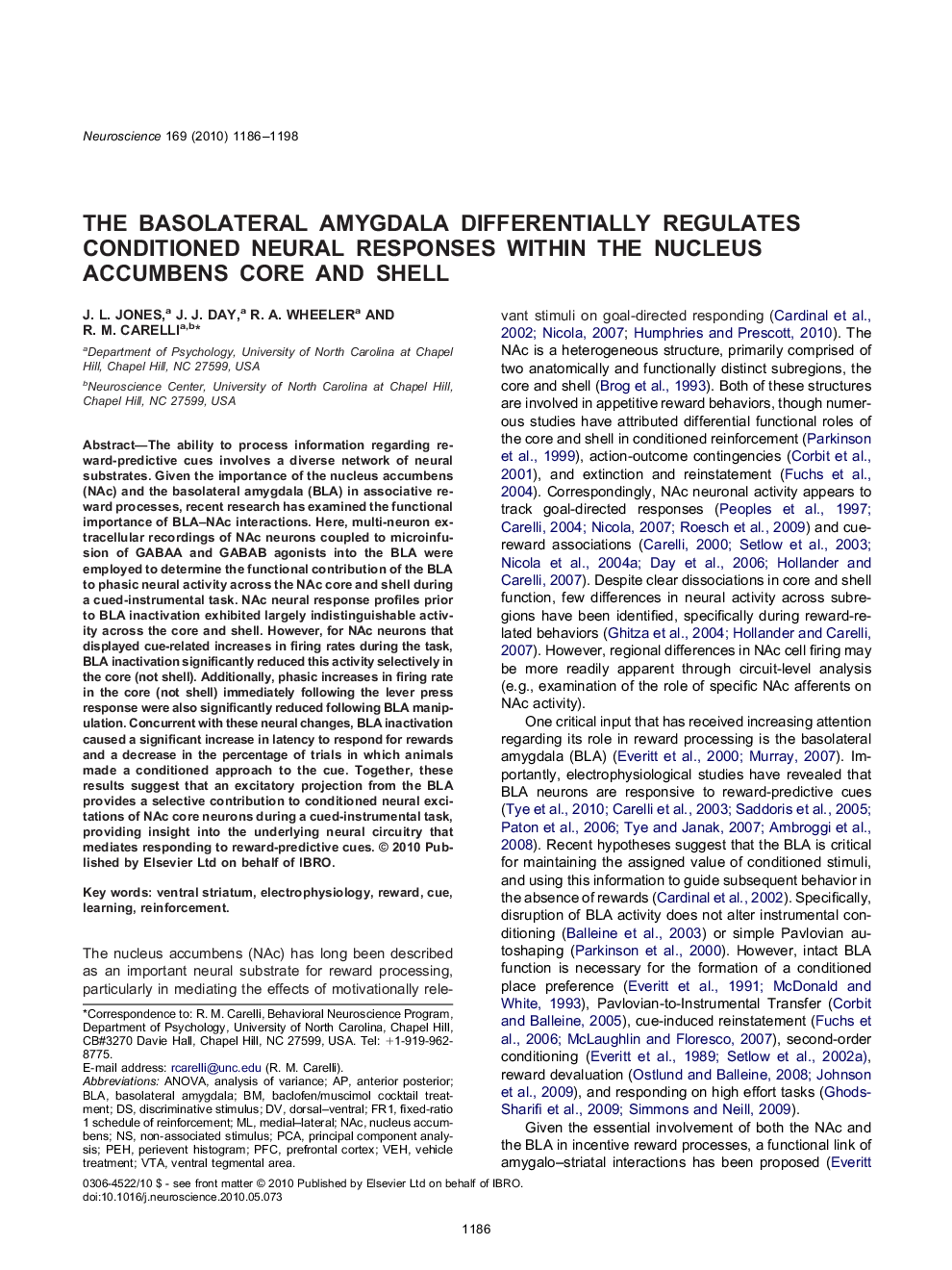| Article ID | Journal | Published Year | Pages | File Type |
|---|---|---|---|---|
| 6277012 | Neuroscience | 2010 | 13 Pages |
Abstract
The ability to process information regarding reward-predictive cues involves a diverse network of neural substrates. Given the importance of the nucleus accumbens (NAc) and the basolateral amygdala (BLA) in associative reward processes, recent research has examined the functional importance of BLA-NAc interactions. Here, multi-neuron extracellular recordings of NAc neurons coupled to microinfusion of GABAA and GABAB agonists into the BLA were employed to determine the functional contribution of the BLA to phasic neural activity across the NAc core and shell during a cued-instrumental task. NAc neural response profiles prior to BLA inactivation exhibited largely indistinguishable activity across the core and shell. However, for NAc neurons that displayed cue-related increases in firing rates during the task, BLA inactivation significantly reduced this activity selectively in the core (not shell). Additionally, phasic increases in firing rate in the core (not shell) immediately following the lever press response were also significantly reduced following BLA manipulation. Concurrent with these neural changes, BLA inactivation caused a significant increase in latency to respond for rewards and a decrease in the percentage of trials in which animals made a conditioned approach to the cue. Together, these results suggest that an excitatory projection from the BLA provides a selective contribution to conditioned neural excitations of NAc core neurons during a cued-instrumental task, providing insight into the underlying neural circuitry that mediates responding to reward-predictive cues.
Keywords
Related Topics
Life Sciences
Neuroscience
Neuroscience (General)
Authors
J.L. Jones, J.J. Day, R.A. Wheeler, R.M. Carelli,
